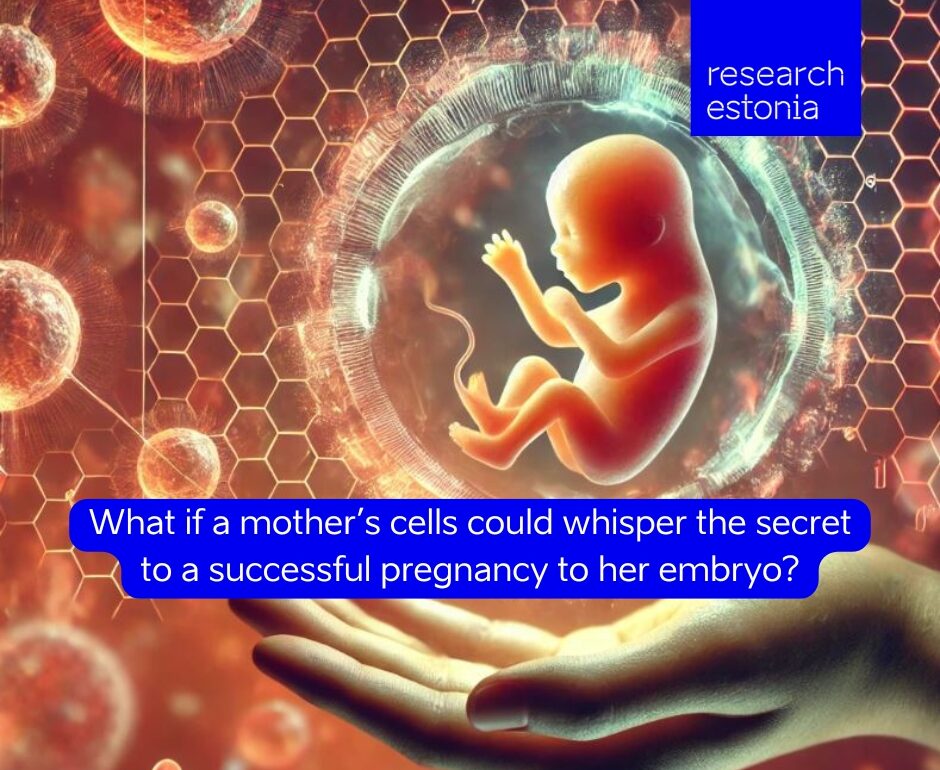The first few days after fertilization of the oocyte play a critical role in subsequent events for embryo implantation and its development. Recent studies have demonstrated that nanovesicles derived from maternal cells mediate the implantation process. Our research suggests that by exposing embryo to nanovesicles from stress-free maternal cells could enhance the success rate of artificial fertilization.
The attachment of an early embryo to maternal cells, referred to as the “mother’s first hug”, marks a pivotal moment in the journey of human life. This critical phase, embryo implantation, marks the first step toward a successful pregnancy. However, the phenomenon extends beyond a simple physical connection. It involves complex cellular communication that ensures the embryo’s successful implantation and subsequent development.
The fertility rate needed to maintain a society’s population size is 2.1 live births per woman. With the global fertility rates likely to drop below this level in the near future, understanding the mechanisms of implantation has become crucial, especially in countries like Estonia, where around 20,000 couples face infertility. Despite advancements in assisted reproductive technologies, the rate of implantation failure is still high. Moreover, infertility treatments can be costly, ranging from 2000 to 7000 euros across Europe.
Therefore, understanding the basic mechanisms of embryo-maternal communication in the early stages of pregnancy is vital for developing new treatments for patients with unexplained implantation failure.
Extracellular vesicles (EVs) play a key piece of the puzzle in this context. These nano-sized particles are released by cells and can transfer a variety of molecular signals, which enables vital communication between mother and embryo. This cellular dialogue is essential for the embryo’s proper implantation and development. The exchange of signals through EVs between the embryo and mother is a kind of biochemical language. This conversation ensures that the embryo implants correctly, leading to a healthy pregnancy.

However, this process can be disrupted under stress conditions, which is a relatively unexplored area of research. Currently, our research team is focusing on understanding how oxidative stress in maternal cells affects the nature of EVs and their cargo produced by maternal endometrial cells. We have discovered that EVs released from stressed maternal cells carry a different set of molecules compared to those from healthy cells.
Specifically, the microRNA content of these EVs changes under stress. These small non-coding RNA, which regulate gene expression, could alter the genetic and biochemical environment of the embryo. The modified cargo can negatively impact the embryo and its molecular environment. Eventually, this change may impact the embryo’s development and increase the risk of implantation failure.
Given this finding, one potential strategy to enhance fertility outcomes involves blocking the transmission or effects of these stress-related signals when maternal cells are under stress. Alternatively, introducing EVs from healthy, unstressed maternal cells could act as a form of therapy. We could potentially “deceive” the embryo into a healthier state, thereby improving implantation success rates.
Due to ethical concerns, our work was restricted to in vitro model to examine the consequences of maternal oxidative stress on the EV cargo and their potential to transfer stress signals to the embryo. Although in vitro environments are informative for controlled experiments, they are not as complex or dynamic as in vivo systems.
We propose using more advanced models, such as organoid systems, that include both stromal and epithelial cells. These systems more closely mimic endometrial tissues and would thus contributing to our growing comprehension of the physiological significance of EV-mediated stress signaling during pregnancy.
This line of research opens new possibilities for therapeutic interventions in cases of infertility. By manipulating the EV-mediated communication between mother and embryo, new treatments could be developed that enhance the likelihood of successful implantation and reduce the incidence of early pregnancy loss. Moreover, this research underscores the importance of maternal well-being during the early stages of pregnancy. Stress management and maintaining a healthy lifestyle could be critical not just for the mother’s health, but also for the optimal development of the embryo.
In conclusion, the “mother’s first hug” goes far beyond a physical attachment. It represents a complex interplay of cellular and molecular events that are crucial for the successful completion of the early stages of pregnancy. By expanding our knowledge of EVs and their role in transferring stress signals during embryo implantation, this could open new pathways. We might eventually increase the ability to address unexplained implantation failure and improve pregnancy outcomes.
Author of this article is Seyed omid reza Mousavi. Editor Jaan-Juhan Oidermaa.
Article written for the contest “Science in 3 minutes” organised by Estonian Academy of Sciences and The Estonian Young Academy of Sciences (EYAS). Main sponsor of the competition is Inclusive Financial Technology Foundation.
If this peek into reproductive health has sparked your curiosity, don’t let it fizzle out —swim on over to our next article for more enlightening facts about how One of the largest male infertility genetic studies improves molecular diagnostics and personalized management of andrology patients!
 Back
Back



